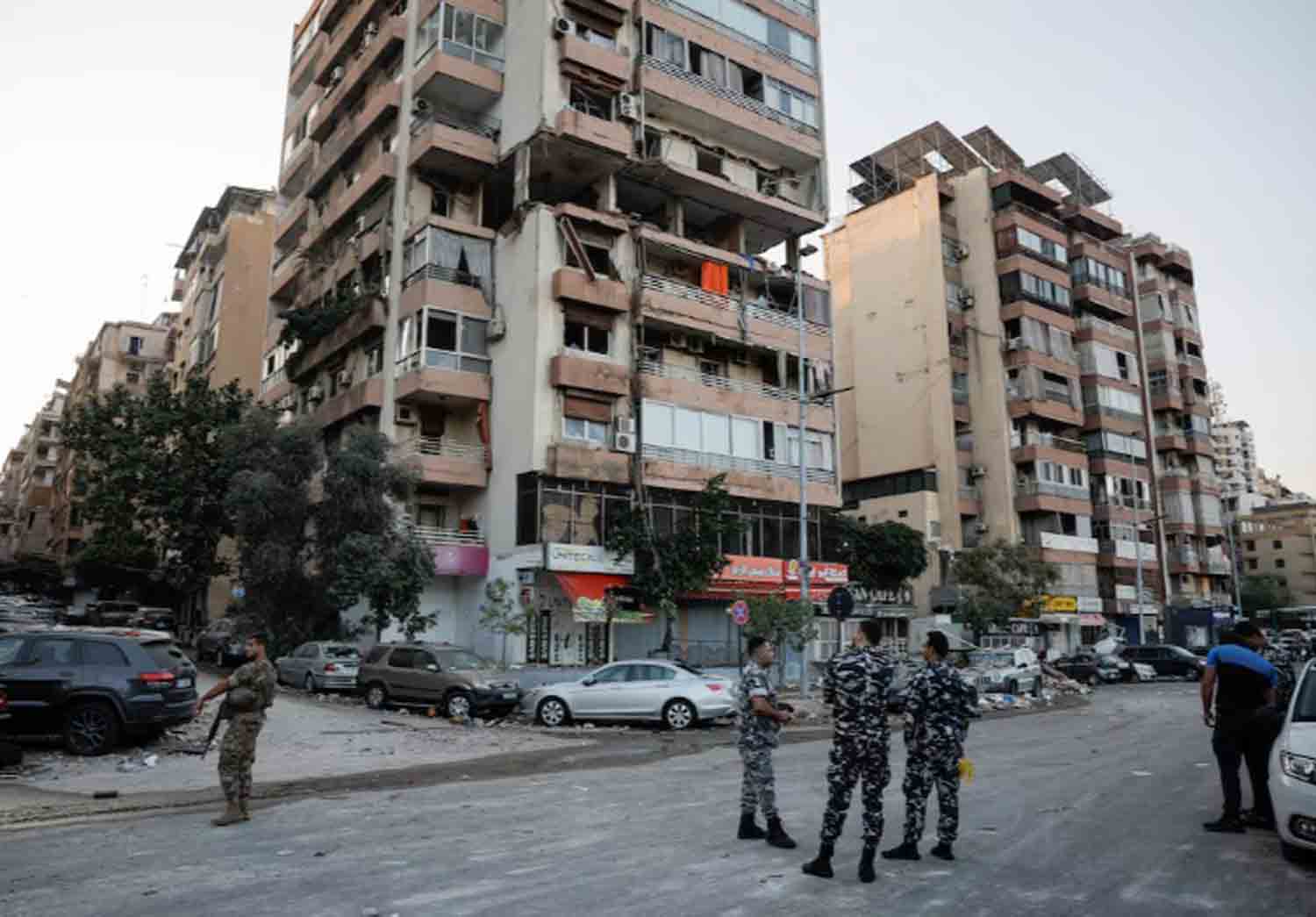Massive consecutive airstrikes targeted the southern suburbs of Beirut from late Saturday into Sunday, according to eyewitnesses. The explosions reverberated throughout the city, producing bright flashes of red and white that were visible from several kilometers away for nearly half an hour.
These strikes followed several days of bombardment by Israel on areas of Beirut known to be strongholds of the Iran-backed militant group Hezbollah, resulting in the death of its leader, Sayyed Hassan Nasrallah, along with a potential successor.
A Lebanese security official reported on Saturday that Hashem Safieddine, who was seen as a possible successor, had been unreachable since Friday, following an Israeli airstrike near the international airport that was believed to have targeted him. The Israeli military announced that Nasrallah was killed in a strike on Hezbollah’s central command headquarters in Beirut on September 27, a claim that Hezbollah has confirmed.
Lebanese security officials reported that Israeli airstrikes since Friday on Dahiyeh, a residential neighborhood and Hezbollah stronghold located south of central Beirut, have hindered rescue teams from searching the site of the attack that occurred on Thursday night. Hezbollah has yet to comment on the situation regarding Safieddine. His potential loss would represent another significant setback for the organization and its ally, Iran. Over the past year, Israeli strikes in the region have intensified, particularly in recent weeks, severely impacting Hezbollah’s leadership.
Israel has been broadening its military operations in Lebanon. On Saturday, it conducted its first strike in the northern city of Tripoli, according to a Lebanese security source, while Israeli forces also carried out raids in the southern region. Reports from Reuters indicated that at least eight strikes shook Beirut’s southern suburbs late Saturday, including areas near the airport, following warnings from the Israeli military for some residents to evacuate.
Prior to this recent escalation, confrontations between Israel and Hezbollah had primarily been confined to the Israel-Lebanon border, coinciding with Israel’s ongoing conflict in Gaza against the Palestinian group Hamas. Israeli military spokesperson Rear Admiral Daniel Hagari stated on Saturday that Israel had eliminated 440 Hezbollah fighters during its ground operations in southern Lebanon and had destroyed 2,000 Hezbollah targets. Hezbollah has not disclosed any casualty figures.
Israel claims it has intensified its offensive against Hezbollah to facilitate the safe return of tens of thousands of citizens to their homes in northern Israel, which have been under bombardment from the group since October 8. Israeli officials reported on Saturday that nine Israeli soldiers have been killed in southern Lebanon to date.
CIVILIAN CASUALTIES AND DISPLACEMENT
According to Lebanese officials, the Israeli offensive has resulted in the deaths of hundreds of civilians in Lebanon and has displaced approximately 1.2 million individuals, nearly a quarter of the country’s population. A Lebanese security official informed Reuters that a recent attack on a Palestinian refugee camp in Tripoli resulted in the deaths of a Hamas member, his spouse, and their two children.
Media sources linked to Hamas reported that the strike targeted a leader of its military wing, identified as Saeed Atallah. The Israeli military confirmed the elimination of two Hamas operatives in Lebanon but did not specify if they were located in Tripoli, a predominantly Sunni Muslim port city that was also a target during the 2006 conflict with Hezbollah.
Hamas has not yet issued a response. In northern Israel, air raid sirens prompted residents to seek shelter as rockets were fired from Lebanon. Hezbollah announced that it had launched missiles at what it described as “ATA company for military industries near Sakhnin base,” situated near Haifa, although the specifics of this claim remain unclear. The Israeli Defense Forces reported that two projectiles were fired from Lebanon, with one being intercepted and the other landing without causing any damage.
ANNIVERSARY OF OCT. 7
As the anniversary of Hamas’ attack on southern Israel on October 7 approaches, which resulted in the deaths of 1,200 individuals and approximately 250 hostages, violence has escalated. In response, Israel’s military operations in Gaza have reportedly led to the deaths of nearly 42,000 Palestinians, according to the health ministry in Gaza, and have displaced almost the entire population of 2.3 million in the region.
The humanitarian crisis has sparked significant global protests, with thousands of people demonstrating in major cities worldwide as the date nears.
Iran, a supporter of both Hezbollah and Hamas, has also been involved, launching ballistic missiles at Israel on Tuesday, although the strikes caused minimal damage.
Israel is currently evaluating its potential responses to these developments.
Concerns over an Israeli attack on Iranian oil facilities have driven up oil prices. On Friday, U.S. President Joe Biden urged Israel to explore alternatives to targeting Iranian oil infrastructure.
Additionally, Army General Michael “Eric” Kurilla, the top U.S. general for the region, is reported to be traveling in the Middle East, although a U.S. defense official did not confirm his specific location or the Israeli media reports suggesting he is in Israel for discussions with military leaders.
Discover more from Defence Talks | Defense News Hub, Military Updates, Security Insights
Subscribe to get the latest posts sent to your email.




